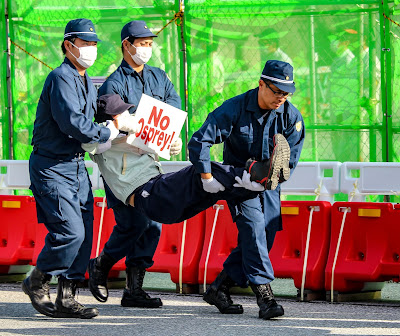Adios Governor Ota

Last June, M asahide Ota, former Governor of Okinawa passed away. He had been governor of the islands in 1995, when long-time resentment and culture of protest against the US military bases achieved a much greater and more widespread character after the rape of a 12 year old girl by three US servicemen. His was a powerful voice for peace and demilitarization in Okinawa. During a trip in October of 2015 Edward A. Alvarez and I (with the help of the intrepid interpreter Shinako Oyakawa) got to visit him at his Naha office one afternoon. When he learned that we were from Guam, he mentioned several Chamorros that he had met over the years and inquired about them. He told us a number of stories from his life, including as experience after being drafted into the Japanese army during the war. He shared others about the struggles to survive for average Okinawans, after the destruction of their island and displacement in order to build new US military bases. I have long written that Okinawa a...




